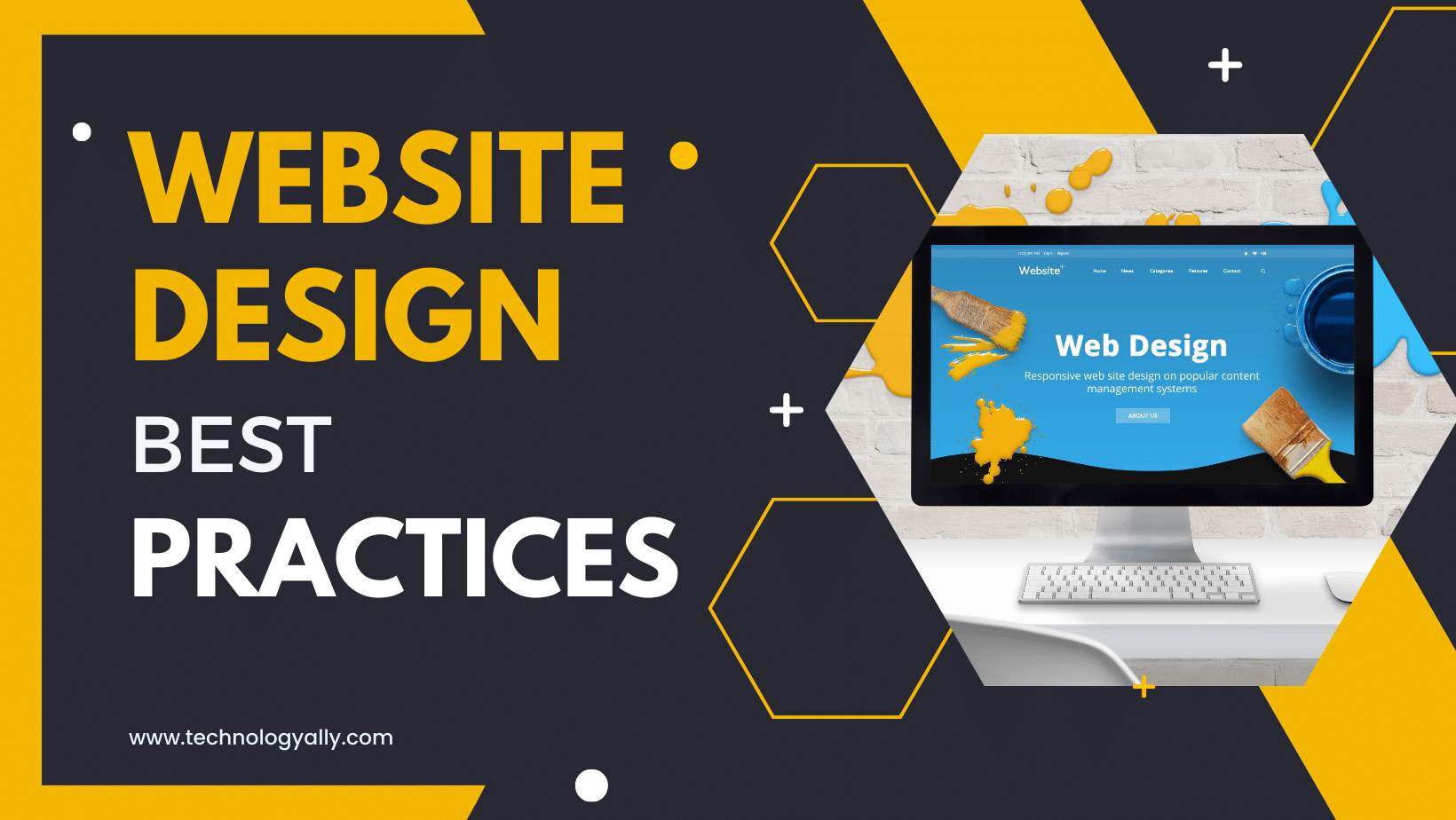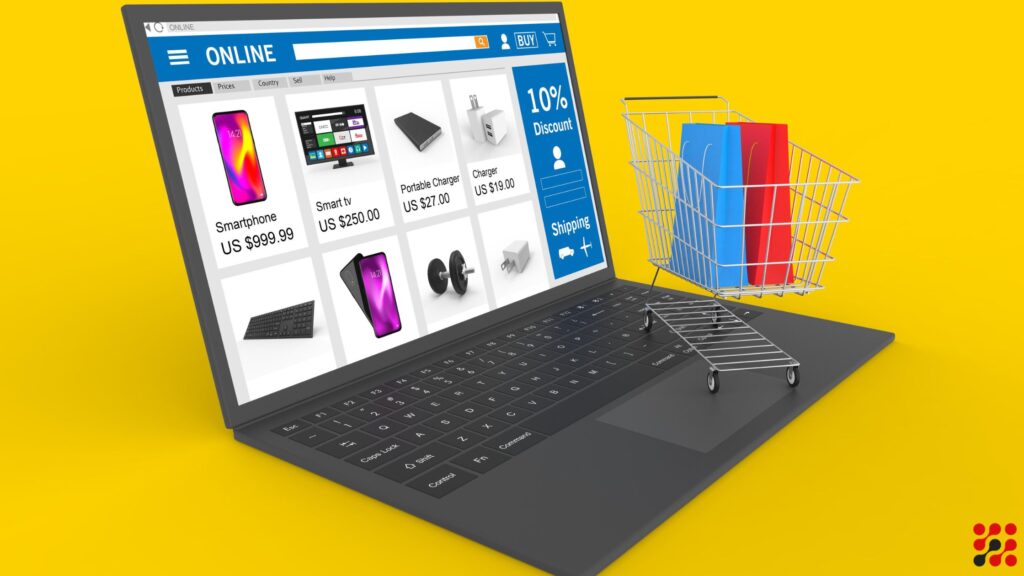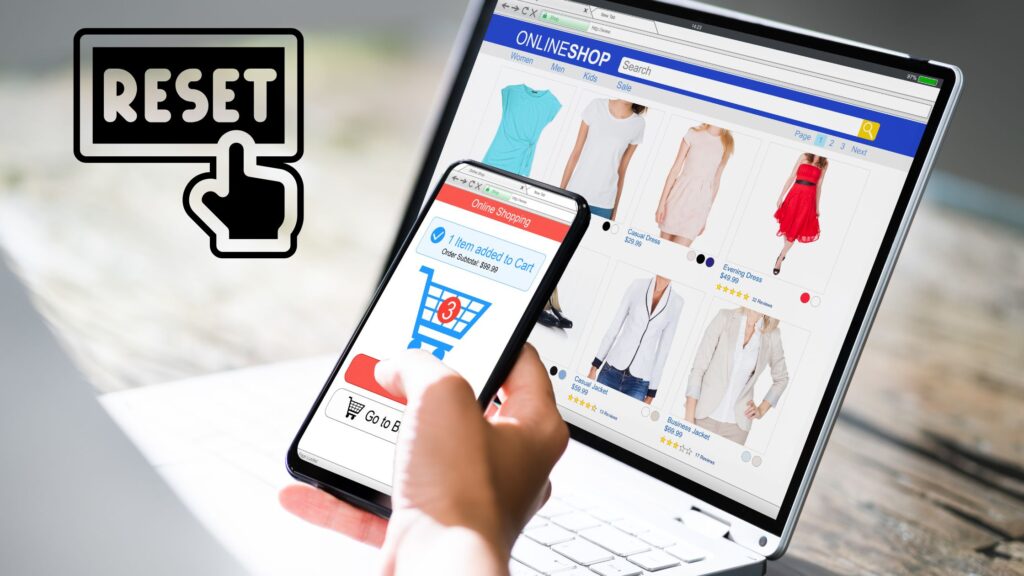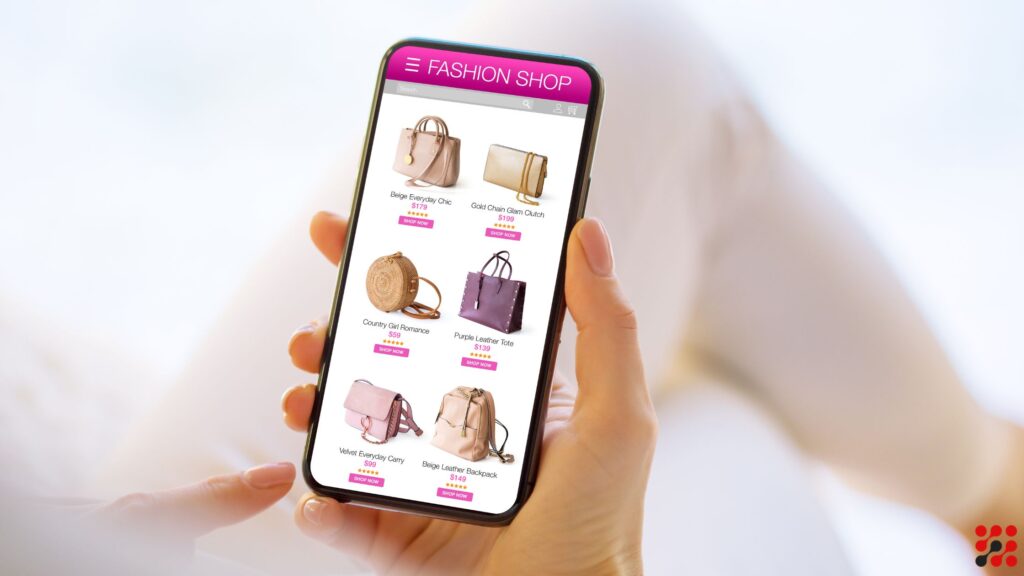Think of your website as a first date. You wouldn’t show up in worn-out sweatpants, right? In the age of digital competition, a beautifully designed website is your stylish first impression.
But beyond aesthetics, it’s the strategic layout and intuitive flow that guide your conversation, build trust, and ultimately lead to a long-lasting connection with your audience.
That’s the magic of website design best practices: they help you craft an unforgettable user experience that converts visitors into devoted brand advocates.
A website is often the first interaction users have with a brand. The significance of website design cannot be overstated, as it directly influences user experience, conversion rates, and brand perception.
Website Design Best Practices
Let’s understand the key principles of website design best practices that can elevate your website development and leave a lasting impact.
Foundational Elements
Clarity: Crafting a Purposeful Narrative
A website should have a clear purpose and convey its message concisely. What do you offer? What problem do you solve?
Communicate this message concisely and captivatingly, using headlines that pique interest and CTAs that guide users toward the next step.
Imagine: A visitor walks into your shop. You shout at them “We have everything!” They get overwhelmed and leave. Your website shouldn’t be that shop.
Key Point: Communicate your value proposition (what you offer and what problem you solve) within seconds of landing on the page.
Tips:
- Use a concise and captivating headline that piques interest.
- Highlight your benefits in simple, understandable language.
- Include a clear call to action (CTA) guiding users to the next step (e.g., “Contact Us” or “Shop Now”).
Visual Hierarchy: Guiding Users with Precision
Think of your website as a well-organized room. Every element, from text to images to buttons, should have a designated space and contribute to a clear visual flow.
Use size, contrast, and white space to guide users’ eyes, directing them to the most important information first.
Imagine: A messy living room with furniture scattered everywhere. It’s confusing and hard to focus. Your website shouldn’t be that room.
Key Point: Organize elements like text, images, and buttons to create a clear visual flow and prioritize information.
Tips:
- Use size and contrast to guide users’ eyes towards the most important elements (e.g., bigger font for headlines, brighter color for CTAs).
- Utilize white space to separate elements and prevent clutter.
- Employ visual cues like arrows or lines to direct attention.
Navigation: Intuitive Paths for User Delight
Your website shouldn’t be a maze. Make navigation intuitive and user-friendly, with menus that are easy to find, understand, and use.
Consider different navigation styles like menus, breadcrumbs, and search bars, ensuring a seamless journey across all your pages.
Imagine: A maze with hidden hallways and dead ends. Your website shouldn’t be that maze.
Key Point: Make navigating your website intuitive and user-friendly, allowing visitors to find information and explore different pages easily.
Tips:
- Keep menus simple and consistent across all pages.
- Offer different navigation options like menus, breadcrumbs, and search bars.
- Ensure links are clearly labeled and easy to understand.
- Test navigation usability with real users to identify any confusing areas.
Essential Design Aspects
Typography: The Power of Fonts
Your chosen font family speaks volumes about your brand. Choose legible fonts that resonate with your brand identity, and work well together in headlines, body text, and calls to action.
Remember, typography can be both practical and stylish! Select legible and brand-appropriate fonts that enhance readability.
Imagine: Your website as a conversation. You wouldn’t use the same voice for everything, right? Fonts are like that.
Key Point: Choose fonts that are:
- Legible: Easy to read on any screen size.
- Brand-aligned: Reflect your brand personality and values.
- Harmonious: Work well together in different sizes and roles (headlines, body text, CTAs).
Tips:
- Use a limited number of font families (2-3).
- Pair contrasting fonts for headlines and body text.
- Consider the emotional impact of different fonts.
Color Palette Harmony
Colors evoke emotions and influence perception. Choose a color palette that aligns with your brand and complements the overall design. Consider accessibility, using sufficient contrast to ensure everyone can easily read and navigate your website.
Think: about your favorite restaurant. The colors might be warm and inviting, making you feel comfortable and ready to indulge. Colors set the mood on your website too.
Key Point: Choose a color palette that:
- Matches your brand: Aligns with your brand colors and personality.
- Complements the design: Creates a cohesive and aesthetically pleasing look.
- Ensures accessibility: Uses sufficient contrast for easy reading and navigation.
Tips:
- Limit your palette to 3-5 primary and secondary colors.
- Consider color psychology and emotions associated with different hues.
- Use tools like contrast checkers to ensure accessibility.
Imagery: Telling Stories with Visuals
Harness the power of visuals to engage users and tell compelling stories. Discuss different image types and provide tips for choosing high-quality, relevant images.
Imagine: Words are great, but a picture (or video) is worth a thousand of them. Use visuals to show your audience what you’re all about.
Key Point: Include high-quality visuals that:
- Showcase your offerings: Products, services, team members, etc.
- Evoke emotions and connect with your audience.
- Tell a compelling story: Explain your value proposition visually.
Tips:
- Use professional or high-quality images and videos.
- Ensure visuals are relevant to your content and brand.
- Optimize visuals for fast loading times.
White Space: A Breath of Fresh Design
Delve into the importance of white space for readability, visual balance, and user experience. Showcase examples of websites effectively using white space.
Imagine: A crowded bookshelf. Every inch is packed with books, making it overwhelming to find what you want. White space is like clearing some shelves, making things easier to see and appreciate.
Key Point: Use white space to:
- Break up text: Improve readability and avoid text walls.
- Highlight key elements: Draw attention to important information.
- Create balance and spaciousness: Make your website feel clean and inviting.
Tips:
- Don’t overload pages with information.
- Use margins, padding, and space around elements.
- Consider the rhythm and flow of white space throughout the design.
Calls to Action (CTAs) That Convert
Design clear and compelling CTAs that guide users toward desired actions. Illustrate the use of strong verbs, contrasting colors, and strategic placement for effective CTAs.
Think of CTAs as friendly signs on your website, guiding visitors toward what you want them to do. Make them clear and inviting!
Key Point: Create CTAs that are:
- Clear and concise: Easy to understand what action they lead to.
- Visually prominent: Stand out from the page and grab attention.
- Actionable: Use strong verbs and encourage clicks.
Tips:
- Use contrasting colors and buttons for CTAs.
- Tailor CTAs to specific pages and their goals.
- A/B test different CTA styles and wording to see what works best.
Optimizing for Performance
Website Speed: The Need for Speed
In today’s fast-paced world, nobody enjoys a slow website. Optimize your website for speed by using image compression, caching, and other performance-boosting techniques.
Remember, a lightning-fast website is a happy visitor, and happy visitors are more likely to convert.
Imagine you’re rushing to buy a gift before the store closes, but the line is agonizingly slow. You might ditch the purchase altogether. That’s what happens with a slow website!
Key Point: Optimize your website to load quickly. People are impatient, and every second they wait is a chance they’ll leave.
Tips:
- Image compression: Reduce image file sizes without sacrificing quality.
- Caching: Store frequently accessed data locally for faster loading.
- Minimize scripts and plugins: Only use essential ones, as they can slow down your site.
- Optimize server response: Choose a reliable hosting provider and optimize server settings.
Mobile Responsiveness: Navigating the Mobile-First Era
Your website isn’t just for desktops anymore. Ensure it is responsive and adapts seamlessly to different screen sizes and devices.
A mobile-friendly website is crucial for reaching a wider audience and providing a consistent, positive user experience across all platforms.
Today, most web browsing happens on phones. You wouldn’t wear ill-fitting shoes every day, so don’t trap your website in a desktop-only world!
Key Point: Make your website responsive and mobile-friendly. It should adapt seamlessly to any screen size or device.
Tips:
- Responsive design: Use a framework that automatically adjusts the layout for different devices.
- Test on mobile: Check how your website looks and functions on various phones and tablets.
- Touch-friendly elements: Ensure buttons and links are easy to tap on mobile screens.
- Prioritize content: Focus on presenting essential information for a smooth mobile experience.
Beyond the Basics
Chunking for Clarity
Avoid overwhelming your visitors with walls of text. Break up content into smaller, easily digestible chunks using subheadings, bullet points, and images. This makes your content more scannable and engaging, leading to better comprehension and retention.
Imagine you’re served a giant, uncut steak. It’s intimidating, right? Now picture bite-sized pieces arranged invitingly. That’s chunking in action!
Key Point: Break down dense text into smaller, easily digestible chunks. This makes your content:
- Scannable: Visitors can quickly grasp key points without feeling overwhelmed.
- Engaging: Smaller, visually distinct sections hold attention better than walls of text.
- Comprehensible: Information is processed better in smaller doses, leading to better retention.
Tips:
- Use subheadings and bullet points to organize and highlight important information.
- Keep paragraphs short and concise.
- Integrate relevant images, infographics, or videos to break up text blocks.
Visual Storytelling
Images aren’t just decorations; they’re powerful storytelling tools. Use visuals that evoke emotions, connect with your audience, and reinforce your brand message. A well-placed image can sometimes say more than a thousand words.
Pictures paint a thousand words, and on your website, they can paint your brand’s story.
Key Point: Use visuals not just for decoration, but to:
- Evoke emotions: Images can trigger happiness, excitement, or trust, connecting with your audience on a deeper level.
- Reinforce your brand message: Visuals can communicate your brand personality, values, and what you stand for.
- Tell a compelling story: Sometimes, an image can convey what words struggle to, adding power and memorability to your message.
Tips:
- Choose high-quality, relevant images that resonate with your target audience.
- Use visuals strategically throughout your website, not just for filler.
- Ensure visuals align with your brand identity and tone.
Accessibility for All
Remember, your website should be accessible to everyone, regardless of abilities. Follow WCAG guidelines and best practices, such as using alt text for images and ensuring keyboard navigation is available. An inclusive website not only benefits users with disabilities, but also showcases your commitment to social responsibility.
Everyone deserves to access your website and its offerings. Make your site inclusive by prioritizing accessibility.
Key Point: Design your website to be accessible to users with different abilities, following WCAG (Web Content Accessibility Guidelines) and best practices.
Examples:
- Use alt text descriptions for images, allowing screen readers to convey their meaning.
- Ensure adequate color contrast for easier visibility for users with visual impairments.
- Provide keyboard navigation options for users who cannot use a mouse.
Benefits:
- An inclusive website welcomes a wider audience, increasing your reach and potential customers.
- It promotes social responsibility and demonstrates your commitment to diversity and inclusion.
Staying Up to Date
Trend-Savvy Design
The digital world is constantly evolving, and so should your website. Keep an eye on emerging design trends and best practices, incorporating elements that resonate with your audience while maintaining your brand identity.
A fresh and modern website doesn’t just look good, it feels relevant and speaks to your audience’s current sensibilities.
Testing and Refinement
Your website is never “finished.” Continuously test and refine your design based on user data and feedback.
Tools like A/B testing and analytics can help you identify what works and what doesn’t, allowing you to optimize your website for maximum conversion and engagement.
Website Design Requirements
Now that we’ve laid the groundwork, let’s delve into the specific elements that make up a well-designed website.
Header and Footer: These are the bookends of your website, establishing your brand identity and providing essential navigation links. Make sure they’re consistent, visually appealing, and easy to navigate.
Menu Navigation: Your menu is the roadmap to your website. Keep it simple, intuitive, and easily accessible from any page. Consider different menu styles like drop-down menus or hamburger menus, depending on your website’s structure and content.
Search Bar: For larger websites and stores, a search bar is crucial for helping users find what they’re looking for quickly and efficiently. Make sure it’s prominently positioned and easy to use.
Branding: Your website is an extension of your brand. Every element, from colors and fonts to imagery and tone of voice, should be consistent with your brand identity. Ensure your website reflects your brand personality and values.
Color Palette: As mentioned earlier, choose a color palette that aligns with your brand and creates a harmonious visual experience. Use colors strategically to highlight key elements and guide users through your website.
Headers: Headers break up your content and make it easier to scan. Use clear and concise headlines that accurately reflect the content below and guide users through your message.
Clear Labels: Every button, form field, and link should have a clear and concise label that accurately describes its function. Avoid confusing jargon or abbreviations, as this can frustrate users and impede their progress.
Visuals and Media: Images, videos, and infographics can significantly enhance your website’s visual appeal and user experience. Use high-quality visuals that are relevant to your content and resonate with your audience.
Calls to Action (CTAs): Make it clear what you want your visitors to do. Use strong CTAs that are strategically placed and visually prominent. Encourage clicks and guide users towards the next step in their journey with your brand.
Whitespace: Remember, white space is your friend. Use it generously to prevent your website from feeling cluttered and overwhelming. Give your content room to breathe and make it easier for users to digest your message.
Conclusion
Creating a successful website isn’t just about aesthetics; it’s about strategic design, clear communication, and user-centricity.
By incorporating the best practices discussed here, you can craft a website that resonates with your audience, guides them toward your goals, and leaves a lasting positive impression.
Remember, your website is your digital storefront, so make it one that welcomes, entices, and ultimately converts.







